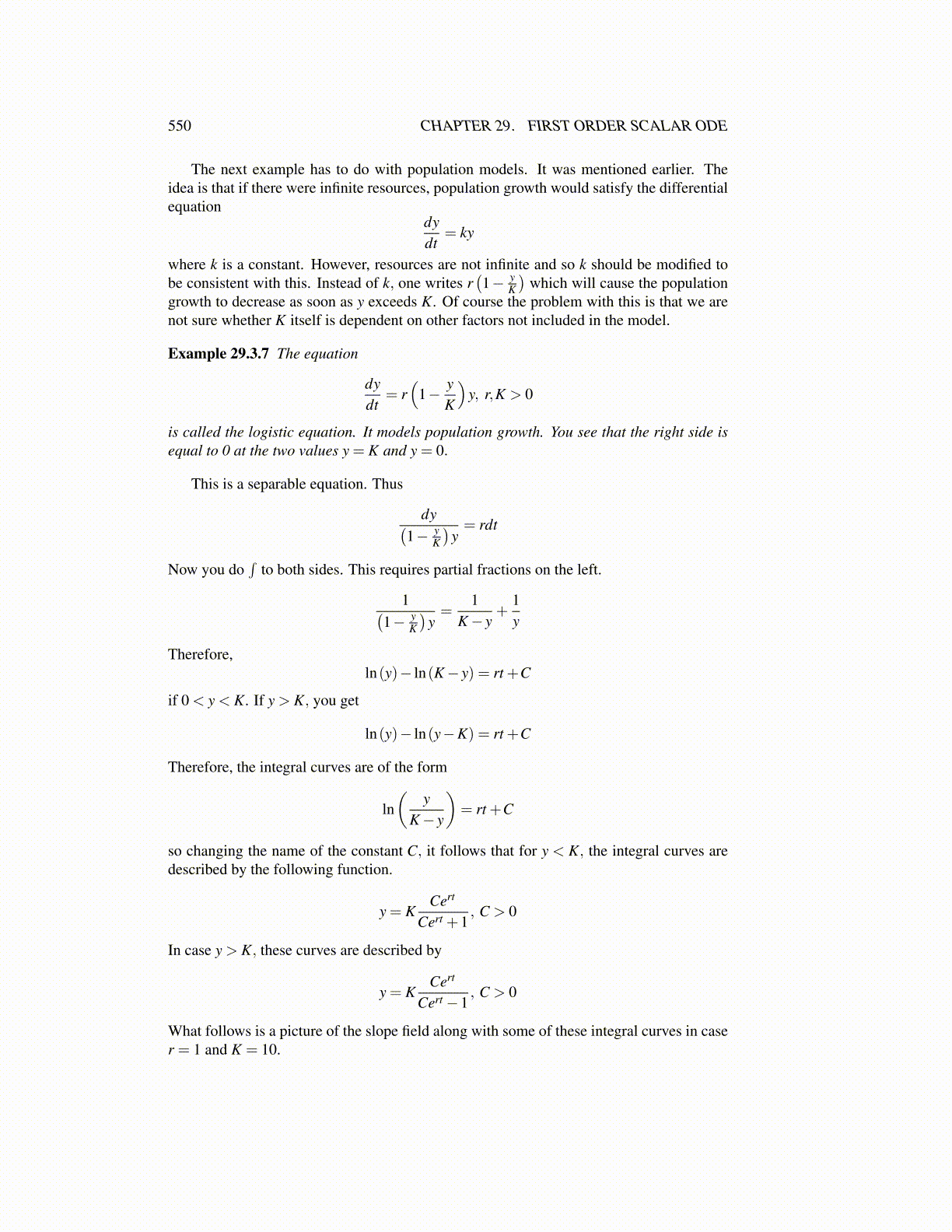
550 CHAPTER 29. FIRST ORDER SCALAR ODE
The next example has to do with population models. It was mentioned earlier. Theidea is that if there were infinite resources, population growth would satisfy the differentialequation
dydt
= ky
where k is a constant. However, resources are not infinite and so k should be modified tobe consistent with this. Instead of k, one writes r
(1− y
K
)which will cause the population
growth to decrease as soon as y exceeds K. Of course the problem with this is that we arenot sure whether K itself is dependent on other factors not included in the model.
Example 29.3.7 The equation
dydt
= r(
1− yK
)y, r,K > 0
is called the logistic equation. It models population growth. You see that the right side isequal to 0 at the two values y = K and y = 0.
This is a separable equation. Thus
dy(1− y
K
)y= rdt
Now you do∫
to both sides. This requires partial fractions on the left.
1(1− y
K
)y=
1K− y
+1y
Therefore,ln(y)− ln(K− y) = rt +C
if 0 < y < K. If y > K, you get
ln(y)− ln(y−K) = rt +C
Therefore, the integral curves are of the form
ln(
yK− y
)= rt +C
so changing the name of the constant C, it follows that for y < K, the integral curves aredescribed by the following function.
y = KCert
Cert +1, C > 0
In case y > K, these curves are described by
y = KCert
Cert −1, C > 0
What follows is a picture of the slope field along with some of these integral curves in caser = 1 and K = 10.